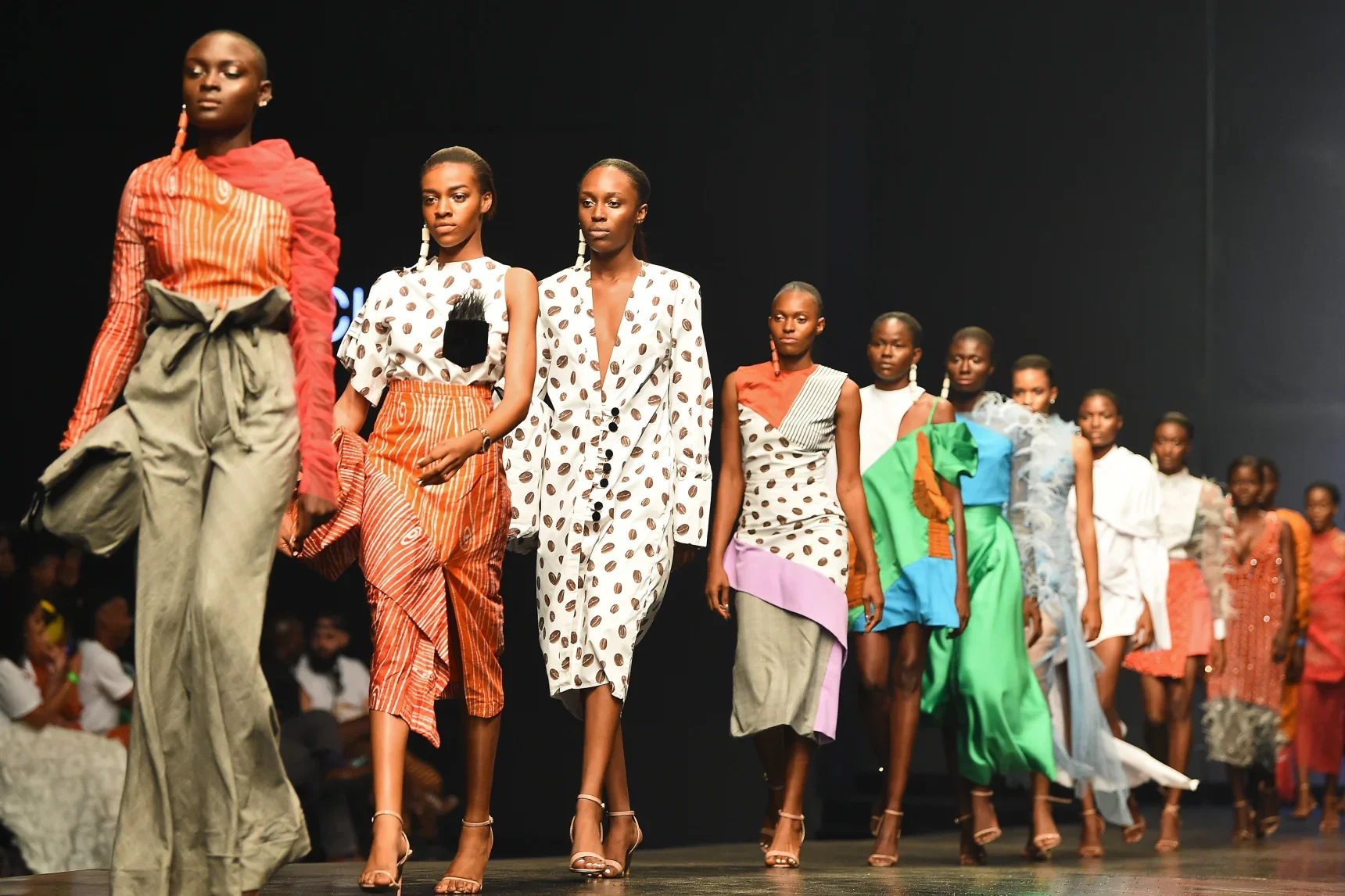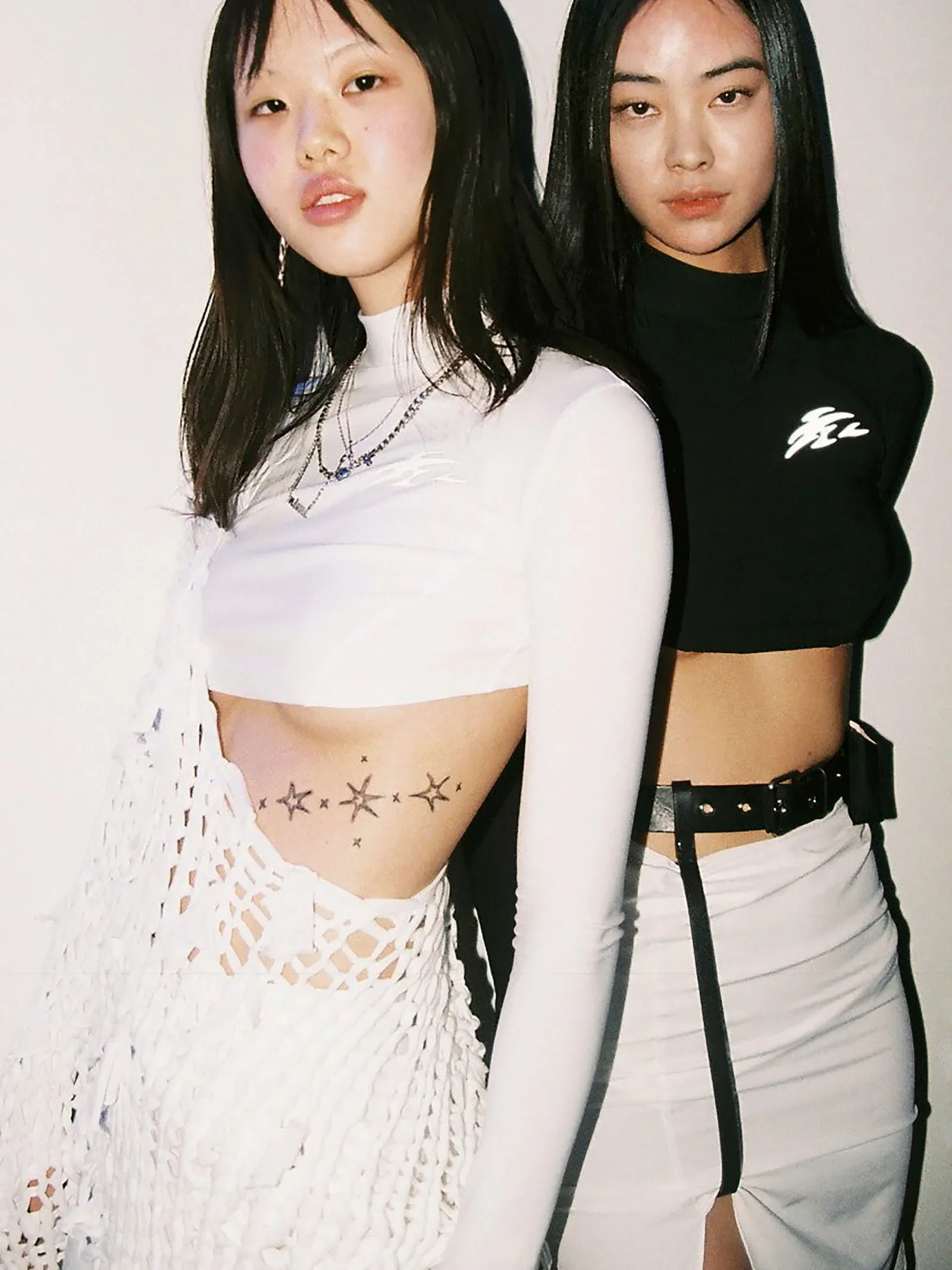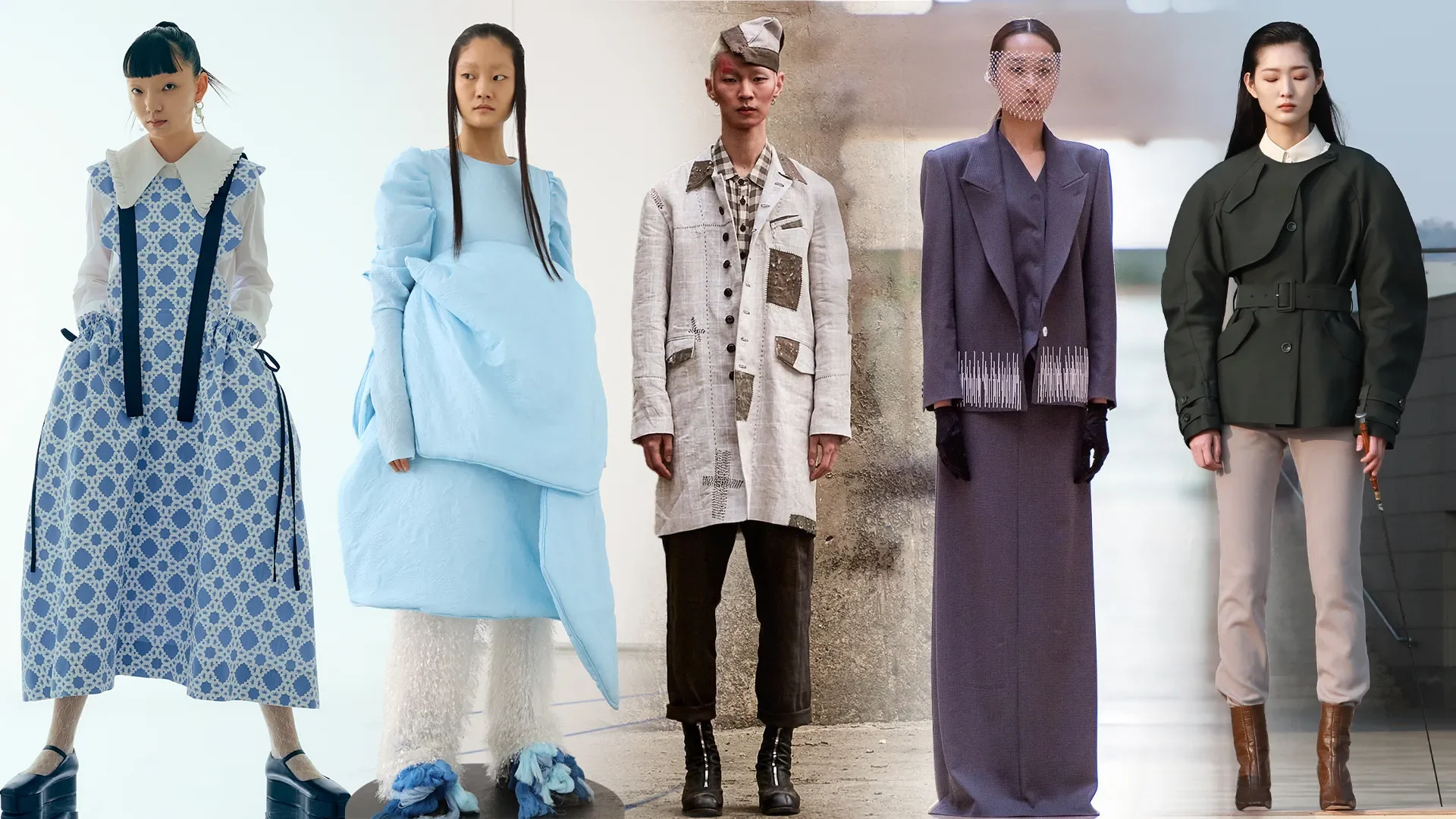The Periphery is the Pulse
Not Just Local Anymore
Orange Culture Lagos Fashion Week Spring/Summer 2025, The Impression
In my article on “Local Cool”, I examined how fashion’s most exciting ideas were emerging not from the traditional powerhouses of London, Paris, Milan, or New York, but from cities often described as being on the “periphery” — Lagos, Seoul, Copenhagen, and others. At the time, this felt like a cultural shift in taste: a growing appetite for local identity, distinctiveness, and authenticity. But increasingly, it’s clear that the change is more than aesthetic — it’s structural. These emerging fashion capitals are rapidly gaining recognition and reshaping the global fashion scene (The Guide Magazine, 2025). These cities are no longer merely “inspiring” outposts feeding ideas into the mainstream; they are now active centres of influence in their own right. Designers, communities, and independent labels from outside the Big Four are shaping global narratives — not borrowing them (The Guide Magazine, 2025). Platforms like Instagram, TikTok, and new luxury retail networks have flattened the map, giving visibility and power to scenes that were once dismissed as niche (Business of Fashion, 2019).
This raises a bigger question: what happens when the old capitals are no longer the only arbiters of taste? When a show in Tbilisi or a campaign from Mexico City can generate more cultural capital than a front row in Paris? We’re witnessing the slow redistribution of fashion’s authority — and this time, the map is being redrawn by the margins.
Why the Big Four Are Losing Their Grip
TBILISI SPRING 2019 MATERIEL, Mercedes-Benz Fashion Week Tbilisi
To understand why this shift is taking place, we need to first examine what’s happening in fashion’s historic centres of power. London, Paris, Milan, and New York remain culturally dominant — but increasingly, that dominance is part of the problem. Vanessa Friedman, chief fashion critic at The New York Times, has criticised runway shows for becoming stale and overly derivative (Cultured, 2025). This observation rings particularly true for the Big Four. Their fashion weeks don’t just set the tone for the global calendar — they are the calendar. And as a result, they often amplify trends that feel repetitive, uninspired, or purely commercial. Recent seasons have seen complaints that many runway shows are boring and disappointingly formulaic (The Pace Press, 2024).
The result? A kind of creative burnout. For audiences, the shows start to blur together, each season yielding familiar silhouettes and recycled aesthetics. For designers, the pressure to conform to a relentless production schedule — not to mention digital demands — leaves little room for risk or reinvention. Most shows follow the same predictable formula: cavernous industrial venues, tiered front rows of influencers, choreographed PR blasts. It’s a spectacle, yes — but increasingly, a hollow one.
There’s also the creeping issue of homogenisation. With many of the biggest brands now under the umbrellas of conglomerates like LVMH or Kering, a sameness begins to emerge — in casting, styling, even soundtracks and lighting. The collections may be polished, but they often lack distinctiveness. A staggering concentration of power in a few corporate groups has made the industry more risk-averse (Cultured, 2025). Creative decisions are filtered through layers of commercial necessity. And in an industry where failure is costly, few designers — however talented — are allowed to experiment in truly meaningful ways. In short: the centre still holds, but it’s no longer the only source of gravity.
The Rise of the New Capitals
If the traditional capitals are showing signs of fatigue, elsewhere, energy is surging. The next great fashion capitals aren’t waiting for validation — they’re rewriting the rules altogether. Here are four cities leading the way:
Lagos – Afro-Modernism, Tailoring, and Political Beauty
Lagos Fashion Week Spring/Summer 2019, Fashionista
From the unapologetically fluid silhouettes of Orange Culture to the radical tailoring of Kenneth Ize, Lagos fashion is vibrant, layered, and deeply personal. It’s not just about aesthetics — it’s about identity. Labels like Orange Culture have pioneered genderless, androgynous designs that challenge Nigeria’s traditional norms (FashionNevo, 2025). At the same time, Kenneth Ize merges heritage textiles (such as hand-woven aso-oke fabric) with modern design to create a new aesthetic (SUITCASE, 2020). Colour theory, historical memory, and spiritual symbolism are woven into many garments. Lagos Fashion Week has become a hub for Afro-modernism, where traditional techniques meet radical form and contemporary cuts (The Guide Magazine, 2025). More importantly, Gen Z creatives in Nigeria are challenging old narratives of what it means to “dress African.” Their fashion is political, joyful, and globally relevant — not peripheral. Brands like Orange Culture explicitly use fashion as a tool to push boundaries and express queer identity, vulnerability, and social defiance in a joyful way (FashionNevo, 2025). In short, Lagos’s scene is defining its own narrative and the world is taking note.
Tbilisi – Post-Soviet Cool Grows Up
Tbilisi Fashion Week Spring/Summer 2020, Mercedes-Benz Fashion Week Tbilisi
In the 2010s, fashion’s gaze turned eastward — fascinated by the gritty aesthetic of post-Soviet youth. But today, Georgia no longer plays muse; it plays author. Labels like Situationist and Lado Bokuchava have brought sophistication and polish to what was once labeled “edge.” Mercedes-Benz Fashion Week Tbilisi has become a launchpad for designers blending rawness with refinement. The Georgian capital has proved it deserves attention just as much as any Western hub: Demna Gvasalia’s hometown is teeming with fresh young designers who continue to put Tbilisi on the map, even if it doesn’t command the global spotlight of Paris or Milan (CoolPrettyCool, 2018). What sets Tbilisi apart now is its emotional depth: collections here feel lived-in, haunted, yet elegant. It’s fashion as a memory, not a moodboard — a reflection of real post-Soviet narratives growing up and coming into their own.
Mexico City – Maximalism with Meaning
Bárbara Sánchez-Kane Autumn/Winter 2022 Collection, Denim Jeans Observer
There’s maximalism — and then there’s Mexican maximalism. In the hands of designers like Sánchez-Kane and Carla Fernández, garments become manifestos. Each piece often pulses with cultural tension and intent: think indigenous embroidery meeting surrealist proportions, or sharp tailoring mixed with gender commentary. Bárbara Sánchez-Kane, for example, draws on her Mexican heritage to create subversive, binary-defying collections that dissect machismo and masculinity (DAZED, 2020). Her label is described as a visceral exhibition of sex, emotion, and tenderness, with eccentric touches (like lucha libre masks or even tongue-in-cheek accessories) that carry political weight as well as style (DAZED, 2020). Mexico City’s design scene isn’t just trend-aware; it’s academically and politically literate. The city functions as a creative incubator where anti-colonial aesthetics and speculative fashion sit side by side (DAZED, 2020). This scene values storytelling and context: as Carla Fernández puts it, Mexican fashion draws on exquisite indigenous craftsmanship and “is as sophisticated as any other brand in the world,” made by creators who honour local heritage (MidCityBeat, 2024). It’s less “look at me,” and more “see what this means.”
Seoul – The Tech-Aesthetic Merge
Hyein Seo’s Spring 2019 Presentation in Seoul, Vogue
Few cities feel more future-facing than Seoul. It’s not just a fashion capital — it’s a content capital. In a hyper-connected, hyper-speed society, Seoul’s designers have learned to merge technology, minimalism, and futurism into a sleek, generationally relevant aesthetic. Brands like Wooyoungmi, Ader Error, and Hyein Seo innately understand that fashion now must perform on screens as well as in daily life. Seoul style is precision with personality: genderless silhouettes, modular layers, subtle satire and tech-inspired details. The city’s unique blend of traditional Korean culture with cutting-edge design has made it a major global fashion player (Harper’s Bazaar India, 2024). Seoul Fashion Week is now a must-attend event attracting global buyers and media, and even luxury houses (like Gucci’s 2023 show in Seoul) have recognised the city’s influence (Harper’s Bazaar India, 2024). The aesthetic is distinctly modern — one Ader Error co-founder described their vision as exploring the relationship between man and machine, using technology to push beyond human limitations (Ader Error, 2025). In practice, that means clothes and retail spaces with a sci-fi, experimental edge, but always grounded in the wit and irony of a generation raised online. Seoul’s fashion is fluent in memes and “meta” humor, yet craves substance beneath the surface gloss. It’s the wardrobe of a digital-native generation — aware of aesthetics, fluent in irony, but insisting on authenticity.
The Structural Shift: More Than a Mood
Collage from digital fashion platforms, SSENSE
What we’re seeing in fashion today isn’t just an aesthetic shift — it’s a structural one. The decentralisation of influence is well underway, driven by a combination of digital innovation, cultural appetite, and shifting consumer behavior. While it’s tempting to see Lagos, Tbilisi, Mexico City, and Seoul as merely “emerging scenes,” they’re part of a larger story: the reordering of fashion’s power map.
Social media has been the great leveller. Platforms like Instagram, TikTok, and Substack have allowed designers, stylists, and writers to bypass traditional gatekeepers — the legacy press, the fashion week circuit, the big glossy magazines. In the past, a Vogue feature or a Paris runway slot was the only route to credibility. Now, virality, cultural fluency, and authentic storytelling are just as powerful. A single well-shot lookbook or emotionally resonant TikTok can catapult a designer from Accra or Guadalajara to a global audience overnight. The internet and social platforms have literally shifted the balance of power from gatekeepers to regular consumers, who now have direct access to creators and endless fashion content at their fingertips (Business of Fashion, 2019). Influence is no longer top-down; it’s networked and democratic.
Retail has followed suit. Platforms like SSENSE and Farfetch are no longer niche e-commerce sites — they’re mainstream tastemakers. Their curation has helped elevate regional labels to international relevance, building new bridges between consumers and previously overlooked markets. By selling through global online retailers such as Farfetch and Ssense, indie brands (from Telfar to regional designers) can instantly reach aspirational shoppers worldwide and achieve “cult” status (Vogue Business, 2023). In fact, Ssense has built a reputation on discovering and platforming emerging designers and youth-centric labels, proving that consumers prioritise the product and its story over the prestige of a flagship store (Inside Retail, 2024). The result is a more diverse array of brands available to anyone with an internet connection, which in turn normalises fashion voices from all over the world.
At the same time, luxury resale platforms such as Vestiaire Collective are changing the way we value fashion. Pre-owned clothing has shed its stigma and is now often seen as more desirable (and sustainable) than mass-produced fast fashion. According to Vestiaire Collective’s 2024 circularity report, the platform saw resale revenue grow by 25% in 2023, vastly outperforming the roughly 4% growth of the broader luxury industry (Vestiaire Collective, 2024). This mirrors a general trend: consumers are increasingly choosing to “buy better” rather than buy more. A Boston Consulting Group study found that 85% of pre-owned fashion buyers participate in resale to reduce overconsumption by trading up fast fashion to fewer, higher-quality, longer-lasting items (BCG, 2020). In addition, one in three Vestiaire users say they actively use the platform to hunt down unique or hard-to-find pieces (Vestiaire Collective, 2024). This hunger for authenticity — not just in aesthetic but in sourcing, values, and voice — has redefined what a “fashion capital” even means. Influence is no longer concentrated in a few iconic addresses; it’s diffuse and peer-to-peer. The new capitals aren't asking for permission — they’re building ecosystems that work on their own terms. And the world is watching.
So What Does This Mean?
Georgia Fashion, Fashionista
Globalisation in fashion no longer looks like a one-way street leading to Paris. Instead, it’s become a constellation — a dynamic exchange where influence is increasingly multidirectional. The old model, where cities outside the Big Four felt pressure to emulate or seek validation from the established capitals, is losing relevance. Today, the most compelling designers are those who root their work in local histories, visual languages, and cultural pride — and are unapologetic about it. As Mexican designer Carla Fernández observed, for too long people looked only to foreign trends, when in fact Mexico (and by extension, other “peripheral” locales) had its own haute couture traditions ready to be celebrated (MidCityBeat, 2024).
This shift has huge implications. It means that a runway show in Lagos or a product drop in Seoul can shape global conversations without having to pass through traditional fashion filters. Trend forecasting, once the guarded domain of centralised agencies and legacy media, is now more fragmented — and more reflective of diverse realities. A silhouette that gains traction in Tbilisi isn’t just a regional curiosity; it can become the next global reference point. Likewise, a streetwear trend bubbling up in Mexico City or a sustainability practice pioneered in Copenhagen can quickly influence big brands continents away.
More importantly, fashion is beginning to honour context. Instead of flattening cultural identity into one-size-fits-all trend cycles, we’re witnessing a rise in storytelling and design that embraces complexity, history, and place. In this new landscape, brands outside the old power centres are not just borrowing the spotlight — they’re setting it. They’re no longer defined by their distance from Paris or Milan, but by their proximity to something more urgent: truth, relevance, and originality.
The New Map
Seoul Fashion Week Autumn/Winter 2021, Vogue
“Local” style isn’t niche anymore — it’s becoming the new mainstream. What used to be considered peripheral is now influencing the centre, with designers and scenes from outside the traditional fashion capitals reshaping the conversation on their own terms. A new, polycentric fashion system has begun to emerge, as countless cities vie for a place on the industry’s stage. The fashion world is no longer a circle drawn tightly around four cities. It’s a constellation — sprawling, dynamic, and lit by points of light from Lagos to Tbilisi, Seoul to Mexico City. Power in fashion is no longer held solely by geography. It’s held by vision, storytelling, and authenticity — and those qualities can flourish anywhere. As one report noted, the Big Four still lead, but many other cities are now challenging that exclusivity as creative hubs of their own. The map of fashion influence has broadened dramatically, and both creators and consumers are better for it.
This isn’t the fall of the Big Four. London, Paris, Milan and New York will always matter. But it is the rise of something more democratic, more polyphonic. The centre has widened. And with it, the industry is being forced to listen more carefully, look more broadly, and question what it means to be “global.” In the era ahead, relevance won’t come from legacy or location alone — it will come from resonance. From designers who say something specific and true. From cities that wear their identities with pride. From communities who see fashion not just as aspiration, but as articulation of their story.
The map has changed. And we’re all better for it.








